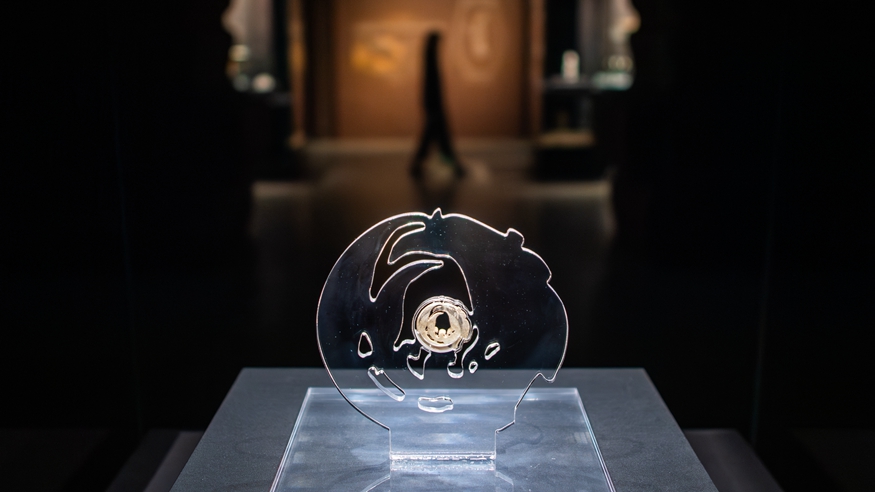* In fact, when black-headed gulls first arrived in Kunming in 1985, they were quite shy of humans. "But the locals were extremely hospitable, offering them their own food such as fried dough sticks and steamed buns," said Wang Zijiang, the honorary chairman of the council of Kunming Birdwatching Association.
* Thanks to the warmth and care shown by Kunming, these once-shy birds have developed a special affection for their human neighbors and environments. Nowadays, almost every resident of Kunming can tell a few heartwarming stories involving people and black-headed gulls.
* In the field of migratory bird conservation, Russia and China have signed numerous bilateral and multilateral agreements, effectively tracking the migratory processes of birds and implementing protection measures, according to Maria Vladimirtseva, a ornithologist at the Siberian Branch of the Russian Academy of Sciences.
KUNMING, China, April 3 (Xinhua) -- At the end of March, the black-headed gulls at Dianchi Lake in Kunming, capital of China's southwestern Yunnan Province, put on their breeding plumage, as if donning black masks over their originally white cheeks. Having spent the balmy winter by the lakeside, they are now gearing up for a northbound Odyssey back to Russia's Siberia, their breeding grounds some 3,000 km away.
Every October since 1985, tens of thousands of the birds have flown from far distant places such as Siberia to the perennially spring-like city of Kunming. At locations like the Haigeng Dam on Dianchi Lake and Cuihu Park, flocking black-headed gulls and thronging visitors in the gentle lakeside breeze paint a lovely picture featuring perfect harmony between humans and nature.
GULLS-FRIENDLY CITY
With the first rays of sunlight every morning, Zhang Liyun arrives at the lake bank on his electric bicycle, carrying a large bag of gull feed, to meet his "old friends" of the migratory birds from afar.
During their wintering period, Zhang, a voluntary supervisor, feeds them every morning along the shores of Dianchi Lake, guiding tourists to watch and feed them in a proper manner.
"Awoo, awoo..." With just a few "signals" from Zhang, hundreds of gulls flocked in from the distance. After nine years of friendly interactions, an intimate link has been built between Zhang and the gulls.
In fact, when black-headed gulls first arrived in Kunming in 1985, they were quite shy of humans. "But the locals were extremely hospitable, offering them their own food such as fried dough sticks and steamed buns," said Wang Zijiang, the honorary chairman of the council of Kunming Birdwatching Association.
Wang, an 84-year-old retired professor from Yunnan University, is one of the earliest scholars in Yunnan to study black-headed gulls. He recalled that when Kunming was preparing to lift the ban on firecrackers in 2005, Wang, along with other experts, immediately wrote to local authorities, dissuading them from forging ahead.
"The hearing of black-headed gulls is 100 times more sensitive than humans', and setting off firecrackers would directly disrupt their habitat," Wang said.
Even to this day, Kunming's ban is still in place on setting off fireworks and firecrackers in the habitat areas of black-headed gulls.
Thanks to the warmth and care shown by Kunming, these once-shy birds have developed a special affection for their human neighbors and environments. Nowadays, almost every resident of Kunming can tell a few heartwarming stories involving people and black-headed gulls.
As early as October last year, the Kunming Forestry and Grassland Bureau purchased over 30 tons of gull feed and set up 62 feeding stations to feed the migratory birds that arrive in Kunming.
"Kunming has not only developed specialized feed for black-headed gulls, but also enacted local regulations for their protection," said Zhao Xuebing, the secretary-general of the Kunming Birdwatching Association.
"Birds are the best indicator of the environment," he noted. The black-headed gulls have become regular visitors to Kunming, a testament to the improvement of Dianchi Lake's ecological environment.
According to the survey results released by the Dianchi Plateau Lake Research Institute in Kunming, there are a total of 175 species of birds in the wetlands of Dianchi Lake.
Pan Min, vice president of the Dianchi Plateau Lake Research Institute in Kunming, said that in recent years, Kunming has vigorously promoted the construction of wetlands around Dianchi Lake to improve its ecological environment.
A total of 6.29 square km of Dianchi Lake's surrounding wetlands have been built, providing an excellent habitat for black-headed gulls and other bird species, she said.
"The presence of black-headed gulls brings vitality to Kunming. With them around, even winters feel warm," Wang said. "A city like Kunming, where humans and black-headed gulls have lived in harmony for decades, is rare to find anywhere else in the world."
MIGRATORY BIRDS KNOW NO BORDERS
To comprehend the population structure and behavioral patterns of black-headed gulls, Wang, Zhao and their fellow researchers traced their migration routes, trekking as far as the shores of Lake Baikal in Siberia.
"Black-headed gulls in Kunming have three migration routes," Zhao said. The longest is to the Sakha Republic in Russia's far east, of which the round trip covers a distance of more than 10,000 km. Another is to Mongolia and Lake Baikal, and the third is to Bosten Lake in China's Xinjiang.
Thousands of kilometers away in Siberia, Russian experts are also working tirelessly to protect black-headed gulls and are actively cooperating with their Chinese counterparts.
"Migratory birds know no borders," said Maria Vladimirtseva, a ornithologist at the Siberian Branch of the Russian Academy of Sciences. "During their migratory journeys, these freely flying beauties often traverse multiple countries," she said. "Therefore, protecting migratory birds requires joint efforts from relevant countries."
In the field of migratory bird conservation, Russia and China have signed numerous bilateral and multilateral agreements, effectively tracking the migratory processes of birds and implementing protection measures, according to Vladimirtseva.
"The close cooperation between experts from both countries, and the timely exchange of ecological data on bird habitats, helps to fully understand the situation of relevant species and take timely measures for their tracking and protection," she added.
Noting the impressive measures taken by both the Chinese government and civil society to effectively protect migratory birds and their wetland habitats, Vladimirovna said, "despite the high population density in China, migratory birds can always find ample places for wintering in this beautiful country, coexisting harmoniously with the local people."
In Cuihu Park stands a bronze statue of an elderly man with black-headed gulls: the elderly man by the name of Wu Qingheng sits leaning on a rock, gazing affectionately at the black-headed gulls; several young gulls flap their wings beside him, as if responding to the caring old man.
When Wu was around, he would walk over 10 km every day to the lake to feed the black-headed gulls, spending over half of his monthly pension on buying feed for them.
Although the 'Seagull Elderly' died more than 20 years ago, the close bond between him and the black-headed gulls has been recorded in Chinese elementary school textbooks.
On the crowded Haigeng Dam, from dawn till dusk, there is always a beautiful scene of humans "dancing" with gulls. As the black-headed gulls are about to take flight, locals and tourists are bidding an emotional farewell to them and wishing them all the best.
(Video reporters: Pang Mingguang, Wang Moying, He Chunhao, Zhang Xiao, Chen Ting; Video editors: Zhang Xiao, Xu Haijing, Liang Junqian)■











